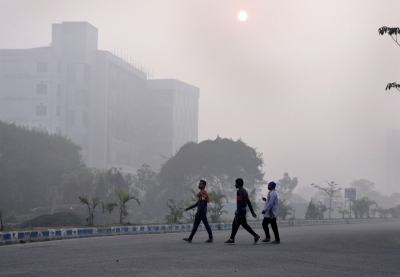
New Delhi, May 7 (IANS) Lack of education surrounding asthma is giving rise to misconceptions and misinformation, delaying treatment of the debilitating respiratory condition, said doctors on World Asthma Day on Tuesday.
World Asthma Day is observed every year on May 7 to raise awareness of the relentless chronic condition. This year’s theme, Asthma Education Empowers, underscores the importance of enhancing awareness and understanding of asthma
“Adherence to treatment plans is pivotal, yet often hindered by misconceptions and misinformation surrounding asthma management,” Dr Indu Khosla, Consultant Pulmonologist, SRCC Children’s Hospital, Mumbai, told IANS.
“Despite the availability of advanced treatment and prevention strategies, there remains a notable lack of education surrounding asthma. Many individuals are unaware of how to effectively manage their condition and access appropriate medical assistance. With proper education and knowledge about asthma, including recent advancements in modern and biological medicines, it becomes easier to prevent and treat the condition,” added Dr. Sachin Kumar, Senior Consultant – Pulmonology & Critical Care Medicine, Sakra World Hospital, Bengaluru.
Asthma prevalence globally ranges from 3-15 per cent, and it is influenced by genetics and environmental triggers like dust, pollution, and viral infections.
Post-Covid, there has been an increase in the number of viral infections causing wheezing in children and this is attributed to reduced immunity due to decreased exposure during the lockdowns.
“Worsening AQI due to construction activities, weather change, etc. has also contributed to a rise in wheezing among children. This phenomenon we are seeing both in normal children without genetic predisposition for asthma and in children with asthma. It is possible that it could be a potential risk leading to future asthma development,” Dr Indu said.
Asthma remains a significant global health concern, affecting an estimated 262 million people worldwide as of 2019 and causing approximately 455,000 deaths annually as per the World Health Organization.
Dr. Pavan Yadav, Lead Consultant – Interventional Pulmonology & Lung Transplantation, Aster RV Hospital told IANS that in India, asthma affects a considerable portion of the population, with urbanisation and air pollution cited as significant contributors to the rising prevalence.
“The challenge in India, as in many lower-middle-income countries, is the under-diagnosis and under-treatment of the disease, which exacerbates the health burden on the population,” he added.
Asthma is a chronic respiratory disorder where the major symptoms are breathlessness, chest tightness, and cough. While more common in early childhood and adolescence, it can happen at any age.
According to Dr. Puneet Khanna HOD And Consultant – Respiratory Medicine Manipal Hospital Dwarka, asthma also spikes comorbidities like allergies.
“The most common is allergic rhinitis or the nasal discharge from the nose or a beacon sneezing. It is estimated that approximately 97 per cent of patients who have asthma also have coexisting allergic rhinitis,” he told IANS.
In addition, there can be sinusitis post nasal drip, headache, or migraine, gastroesophageal reflux disease, irritable bowel syndrome, and autoimmune diseases like joint pains PCOD, or thyroid disorders.
The doctors called for addressing the myths associated with asthma, particularly misconceptions to help boost treatment outcomes.
–IANS
rvt/dan




